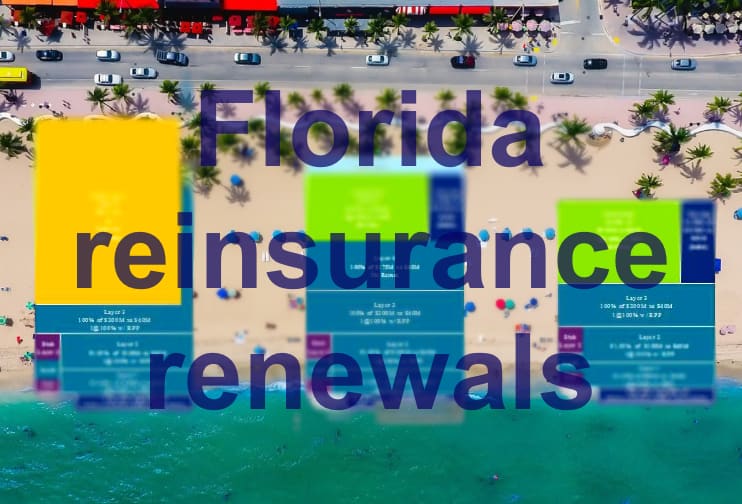June renewals – Slightly less-excellent reinsurance returns ahead: KBW

With catastrophe reinsurance pricing expected to be largely flat to slightly down at the upcoming June 1st reinsurance renewals and little change expected to terms and attachments, analysts from KBW said the industry can expect “slightly less-excellent” returns ahead, implying still-strong expected underwriting profitability.
It’s no surprise to anyone that the KBW analyst team came away from a recent visit to Bermuda with the impression that property catastrophe reinsurance pricing at the June renewal is likely to be in a range from flat to slightly down, by as much as -5%.
That’s been the impression of how rates would move at the mid-year renewals for some time, with some dispersion across cedents and lines of business anticipated still.
But stability is largely expected to remain and as a result, returns from capital allocations to reinsurance, be that by reinsurers or insurance-linked securities (ILS) investors, are expected to remain attractive, loss activity allowing.
Terms and conditions are seen as staying stable, while attachments have barely moved.
In fact, we hear from sources that rather than giving back anything on T&C’s, where reinsurers and some ILS funds are being more compliant for cedents, is in offering more capacity for mid to lower layers, in some cases.
So, in being more helpful to their cedents, they are maintaining the main profit drivers, of the elevated attachments and tighter terms that have been installed across the global catastrophe reinsurance market.
KBW’s analysts note that some executives they spoke with are a little more positive on price too, one notable being Everest COO Jim Williamson, who the analysts said suggested overall rate changes between flat and up 5%.
In addition, they notes that some “executives reported modest improvement over the last two or three days, with (apparently unexpected) gaps in a few programs, which could produce modest y/y increases.”
But the KBW team summarised expectations by saying, “We expect post-6/1 summaries to describe low- to mid-single digit risk adjusted rate decreases with modestly expanding terms and conditions and virtually unchanged attachment points, still implying very attractive expected returns.”
It’s a different picture across layers of reinsurance towers and risk appetites, it seems.
“Risk-adjusted rates for lower layers of coverage are broadly holding firm or rising slightly, with modest decreases manifesting themselves within higher layers,” KBW’s analysts explained.
Once again, most executives spoken with noted an absence of material capital inflows to the reinsurance sector, aside from some retained earnings and a few capital raises, which are largely being absorbed by the increased demand for cover that is being seen.
On attachment points specifically, the analysts said, “We were very slightly disappointed – but really not surprised – to learn that reinsurers plan to raise attachment points every few years (one executive suggested three years, versus the roughly seven year period preceding the January 2023 step-change rather than adopting smaller and smoother increases that should better proxy loss trends. We concede that the logistics are easier (it’s admittedly simpler to conceive of a $90 million excess of $10 million than of $94.5 million excess of $10.5 million), but smaller, steadier attachment point increases would probably moderate the pricing cycle and minimize uncertainty for all parties.”
It will be interesting to see if that comes to pass, but encouragingly it does suggest that the reinsurance market has finally absorbed the reality of rising exposure and the need to ensure risk is shared commensurately as exposure increases.
Of course, the June 1 reinsurance renewal has a distinctly Florida and southeast coastal US focus in the main, but most sources of ours suggest that the market conditions seen at June 1st are expected to play out through the mid-year renewal at July 1st as well.
The prospect of still excellent returns in reinsurance in 2024, only slightly less so than 2023, will still be very attractive to investors.
Given the time of year, investors that have not yet deployed capital into ILS strategies (other than well-diversified cat bond funds) or reinsurance are likely to sit it out until later in the year now, given the hurricane season is approaching fast and officially begins on June 1st.
With returns set to remain elevated there is a strong chance that investor interest for ILS and reinsurance grows this year, as even if the hurricane season proved costly, the result of that would be expected to drive rates up higher and faster again, making those excellent returns even more excellent in future years.





